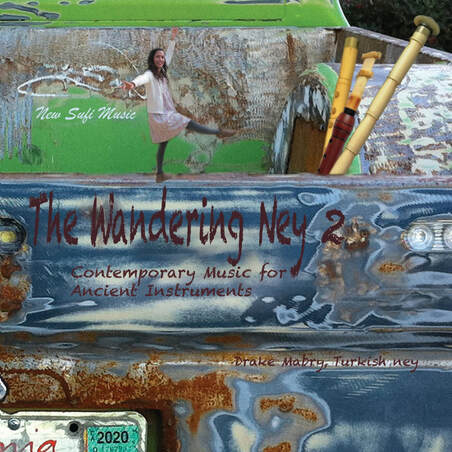|
The Wandering Ney 2 New Sufi Music Contemporary Music for Ancient Instruments Drake Mabry, Turkish ney Old King Cole Productions Drake Mabry, Turkish kiz ney [1-21] Improvisations by The Wandering Trio [4-9, 11-14, 16-19, 21] Drake Mabry, Turkish kiz ney Marie-Anne Cécile Andurand, kalimba Igor Korneitchouk, percussion |
The Wandering Ney 2 - 58:13
Contents
Igor Korneitchouk: Birthday Suit (Implied text by Igor Korneitchouk)
[1] The Rhythm of Speech 3:25
[2] The Rhythm of Sight 3:04
[3] The Rhythm of Breath 5:52
The Wandering Trio : Suite I
[4] Kalimba 0:59
[5] Bosphorous at Night 0:43
[6] Traveling Merchant 1:28
[7] The Wandering Ney 1:03
[8] Istanbul Cats 0:31
[9] Flirtation 0:30
[10] Nicolas Vérin : Meltem 4:13
The Wandering Trio : Suite II
[11] Raindrops 3:15
[12] Siesta 2:09
[13] Sufi Dreams 2:18
[14] Bone Dance 1:25
[15] Drake Mabry : Silent Durations XLVIII (revised) 7:55
The Wandering Trio : Suite III
[16] Reflections 1:41
[17] The Foehn Wind 0:57
[18] Calando 1:07
[19] Tumble Down 0:25
[20] Yves Menut/Drake Mabry : New Derviche 4:50
[21] The Wandering Trio : Kadiköy Sky 6:17
Contents
Igor Korneitchouk: Birthday Suit (Implied text by Igor Korneitchouk)
[1] The Rhythm of Speech 3:25
[2] The Rhythm of Sight 3:04
[3] The Rhythm of Breath 5:52
The Wandering Trio : Suite I
[4] Kalimba 0:59
[5] Bosphorous at Night 0:43
[6] Traveling Merchant 1:28
[7] The Wandering Ney 1:03
[8] Istanbul Cats 0:31
[9] Flirtation 0:30
[10] Nicolas Vérin : Meltem 4:13
The Wandering Trio : Suite II
[11] Raindrops 3:15
[12] Siesta 2:09
[13] Sufi Dreams 2:18
[14] Bone Dance 1:25
[15] Drake Mabry : Silent Durations XLVIII (revised) 7:55
The Wandering Trio : Suite III
[16] Reflections 1:41
[17] The Foehn Wind 0:57
[18] Calando 1:07
[19] Tumble Down 0:25
[20] Yves Menut/Drake Mabry : New Derviche 4:50
[21] The Wandering Trio : Kadiköy Sky 6:17
Introduction
For centuries the sound of the ney has developed and evolved into the majestic instrument it is today. The origins of this end-blown long reed flute date back over 3000 years. The Turkish ney that comes to us today is most often associated with the Ottoman Empire and is said to have been originally created by the first Sufi poet, Mevlâna Jalâluddin Rumi. There are thousands of beautiful and meaningful works written for this instrument over several hundred years. This album hopes to expand its appeal into the world of 21st century contemporary music.
I began this recent leg of my life journey by studying the ney and Turkish music with Ismail Hakki in Istanbul, concentrating on this rich tradition. While in Istanbul, I also studied the ebru painting technique with Ayla Makas to accompany my musical studies. At the same time, I began researching new possibilities in sound production and interpretation for the ney, all the while remaining faithful to the ney’s origins and its deep meanings.
The Wandering Ney 1 and 2 are the fruits of this research. Fourteen composers were invited to write compositions in any style, each given a booklet on composing for the ney in a contemporary musical language that I compiled expressly for that purpose. The result is a collection of works, diverse in style by composers from France, the United States, Romania and Australia. In the future I hope to continue with some contemporary works from Turkish composers.
Originally, we had the idea of having short improvisations inserted between some of the pieces as a way to provide a change of color from the solo ney. I chose a trio of ney, kalimba and percussion for this purpose. However, after recording these improvisations there was such a good deal of useful stand-alone material that they took on a musical identity of their own and we decided to use them in combinations of various suites on the second album. The players beside myself are Marie-Anne Cécile Andurand, kalimba and Igor Korneitchouk, percussion.
So far I have not been able to find any evidence of any other ney players or composers exploring new techniques like these for the ney, sometimes referred to as extended techniques on other instruments. But I hope that other musicians will continue and enlarge upon the work I’ve begun. ~ Drake Mabry
For centuries the sound of the ney has developed and evolved into the majestic instrument it is today. The origins of this end-blown long reed flute date back over 3000 years. The Turkish ney that comes to us today is most often associated with the Ottoman Empire and is said to have been originally created by the first Sufi poet, Mevlâna Jalâluddin Rumi. There are thousands of beautiful and meaningful works written for this instrument over several hundred years. This album hopes to expand its appeal into the world of 21st century contemporary music.
I began this recent leg of my life journey by studying the ney and Turkish music with Ismail Hakki in Istanbul, concentrating on this rich tradition. While in Istanbul, I also studied the ebru painting technique with Ayla Makas to accompany my musical studies. At the same time, I began researching new possibilities in sound production and interpretation for the ney, all the while remaining faithful to the ney’s origins and its deep meanings.
The Wandering Ney 1 and 2 are the fruits of this research. Fourteen composers were invited to write compositions in any style, each given a booklet on composing for the ney in a contemporary musical language that I compiled expressly for that purpose. The result is a collection of works, diverse in style by composers from France, the United States, Romania and Australia. In the future I hope to continue with some contemporary works from Turkish composers.
Originally, we had the idea of having short improvisations inserted between some of the pieces as a way to provide a change of color from the solo ney. I chose a trio of ney, kalimba and percussion for this purpose. However, after recording these improvisations there was such a good deal of useful stand-alone material that they took on a musical identity of their own and we decided to use them in combinations of various suites on the second album. The players beside myself are Marie-Anne Cécile Andurand, kalimba and Igor Korneitchouk, percussion.
So far I have not been able to find any evidence of any other ney players or composers exploring new techniques like these for the ney, sometimes referred to as extended techniques on other instruments. But I hope that other musicians will continue and enlarge upon the work I’ve begun. ~ Drake Mabry
Program notes
Birthday Suit (version for ney)
"The poet T. S. Eliot says about interpretive performance: if one ‘has studied the author's version, he can assure himself that he is departing from it deliberately, and not from ignorance.’ I could not have stated my intentions towards this piece better than to quote T. S. Eliot. No note or inflection is fixed in stone that it cannot be negotiated, changed to better suit the needs of the performer. This is especially true of the first movement which is composed around sections of the first of Eliot's Four Quartets (Burnt Norton), but applies generally to the whole piece. Much of the notation in this piece is meant to be suggestive. The performer may take a highly faithful approach to realizing the score, or consider the movements as models for directed improvisation. Movement 2, for example, asks the performer to ‘continue to improvise in like manner’ yet maps out a clear design for the music. In this case performing the piece on the Turkish ney is an interpretive act as the piece was initially written for oboe. Special mention must be said about the current edition of the first movement. For purposes of a secure publication, the actual words of Burnt Norton were removed once an approximate inflection of the original words was extracted, and replaced by a parody of the text. Either text would fit the notation fine, but neither the original nor the parody need to be exposed to the audience as, after all, the intent of the movement is a more ineffable understanding of musical rhythm and intonation, ie. inflection, which no but each performer of a specific performance owns. Birthday Suit is dedicated to Robert S. Howe, a friend and obstetrician who welcomes into this world many people in their "birthday suits". That is the most obvious reason for the title of this piece. A reason more germane to the music itself is the piece’s reliance on the performer’s own natural body rhythms (such as speech rhythms, involuntary eye movements, and rate of breathing) to help organize the flow of the music. In this way both metabolism and the written note cooperate to make music."
Parody of Burnt Norton
“Time present” and I’m piss’d!
One does perhaps wonder what this text’s for,
And my attempt contained in syntax.
If this can’t be literally phrased
All still can be redeemable.
What might have been, can be re-written
Remaining as repossessive probability
Only with a word of imitation
What might be said, and what is said
Point at odds with with what lies on the page.
“Footfalls echo” and et cetera
The full passage which I can not quote
Towards a thought he never opined
Into oblivion, these sounds echo
Thus, on the page.
Yet do I propose
Disturbing not a mote of legal questions
We do not want.
Words struck, never said
Only intoned; but words which are only printed
Can never sound. Words, without pitch, fall
Into a space-void. Never before heard, in silence,
Can sounds of meaning sound
The soundless, the word is censored thus
Moves eventually without meaning.
Not the profit of the publisher, while the ink dries,
Not that at all, but co-optation!...
Or say that the sound precedes the performance,
And the sound and the performance are therefore heard
Before the performance and after the sound.
And thought is therefore there. Words fix,
Crack and often twist, silent in service,
Under the tyrant, boss, King, owners --
Decay of morality — words yearn to be free,
Will stray away. Strangled voices
Scalding, boiling, and simply castrated,
Always ensla’ved. The word as it’s printed
Is most protected by others in collusion,
Co-operative, yes, State hegemony,
The crass complaint of our disconsolate politics.
The status quo is never in question!
As say the poets with their long lines,
Desire to be most artful,
Not to be most profitable:
Love must be the full measure
Only is song by inharmonious,
Timeless, and Invisible
Extent Hand of Capitalism
Caught (by the act of litigation)
Between creation and singing.
Sudden in the hall of echo
Even as the note dies
There murmurs the quiet scuffling
Of lawyers on the scavenging....
Quit now, stop, now, never ---
Ridiculous this false sad prose
Stretching beneath and under. ~ Igor Korneitchouk
Meltem
"Meltem" is a northern wind in Turkey, blowing on the aegen sea, mostly through the summer. It can be quite powerful and even violent at times. Meltem (2014) is dedicated to Drake Mabry. ~ Nicolas Vérin
Silent Durations XLVIII (revised)
"My Silent Durations XLVIII (revised) offers an insight into a universe where sound and silence are equals, time is set aside and the listener is invited to participate with the musicians in appreciating the surprising and often tranquil qualities of this special atmosphere. The silences are part of the work’s architecture and phrases will sometimes continue over the silences. There are also some of the micro-tonal intervals found in Turkish classical music."
~ Drake Mabry
New Derviche
"Under the pseudonym of Evym Tunes, Yves Menut is interested in the production of electronic music and collaborates with various artists, who touch on slam, dance among other musical worlds…
He responded to the request from Drake, by offering one of his compositions Derviche, for the ney project. Starting from the bass line and electronic percussion, with a theme played on the MIDI accordion, they developed New Derviche by integrating ney melodic fragments recorded live and remixed, which highlights the richness of expression of the ney." ~ Yves Menut
Birthday Suit (version for ney)
"The poet T. S. Eliot says about interpretive performance: if one ‘has studied the author's version, he can assure himself that he is departing from it deliberately, and not from ignorance.’ I could not have stated my intentions towards this piece better than to quote T. S. Eliot. No note or inflection is fixed in stone that it cannot be negotiated, changed to better suit the needs of the performer. This is especially true of the first movement which is composed around sections of the first of Eliot's Four Quartets (Burnt Norton), but applies generally to the whole piece. Much of the notation in this piece is meant to be suggestive. The performer may take a highly faithful approach to realizing the score, or consider the movements as models for directed improvisation. Movement 2, for example, asks the performer to ‘continue to improvise in like manner’ yet maps out a clear design for the music. In this case performing the piece on the Turkish ney is an interpretive act as the piece was initially written for oboe. Special mention must be said about the current edition of the first movement. For purposes of a secure publication, the actual words of Burnt Norton were removed once an approximate inflection of the original words was extracted, and replaced by a parody of the text. Either text would fit the notation fine, but neither the original nor the parody need to be exposed to the audience as, after all, the intent of the movement is a more ineffable understanding of musical rhythm and intonation, ie. inflection, which no but each performer of a specific performance owns. Birthday Suit is dedicated to Robert S. Howe, a friend and obstetrician who welcomes into this world many people in their "birthday suits". That is the most obvious reason for the title of this piece. A reason more germane to the music itself is the piece’s reliance on the performer’s own natural body rhythms (such as speech rhythms, involuntary eye movements, and rate of breathing) to help organize the flow of the music. In this way both metabolism and the written note cooperate to make music."
Parody of Burnt Norton
“Time present” and I’m piss’d!
One does perhaps wonder what this text’s for,
And my attempt contained in syntax.
If this can’t be literally phrased
All still can be redeemable.
What might have been, can be re-written
Remaining as repossessive probability
Only with a word of imitation
What might be said, and what is said
Point at odds with with what lies on the page.
“Footfalls echo” and et cetera
The full passage which I can not quote
Towards a thought he never opined
Into oblivion, these sounds echo
Thus, on the page.
Yet do I propose
Disturbing not a mote of legal questions
We do not want.
Words struck, never said
Only intoned; but words which are only printed
Can never sound. Words, without pitch, fall
Into a space-void. Never before heard, in silence,
Can sounds of meaning sound
The soundless, the word is censored thus
Moves eventually without meaning.
Not the profit of the publisher, while the ink dries,
Not that at all, but co-optation!...
Or say that the sound precedes the performance,
And the sound and the performance are therefore heard
Before the performance and after the sound.
And thought is therefore there. Words fix,
Crack and often twist, silent in service,
Under the tyrant, boss, King, owners --
Decay of morality — words yearn to be free,
Will stray away. Strangled voices
Scalding, boiling, and simply castrated,
Always ensla’ved. The word as it’s printed
Is most protected by others in collusion,
Co-operative, yes, State hegemony,
The crass complaint of our disconsolate politics.
The status quo is never in question!
As say the poets with their long lines,
Desire to be most artful,
Not to be most profitable:
Love must be the full measure
Only is song by inharmonious,
Timeless, and Invisible
Extent Hand of Capitalism
Caught (by the act of litigation)
Between creation and singing.
Sudden in the hall of echo
Even as the note dies
There murmurs the quiet scuffling
Of lawyers on the scavenging....
Quit now, stop, now, never ---
Ridiculous this false sad prose
Stretching beneath and under. ~ Igor Korneitchouk
Meltem
"Meltem" is a northern wind in Turkey, blowing on the aegen sea, mostly through the summer. It can be quite powerful and even violent at times. Meltem (2014) is dedicated to Drake Mabry. ~ Nicolas Vérin
Silent Durations XLVIII (revised)
"My Silent Durations XLVIII (revised) offers an insight into a universe where sound and silence are equals, time is set aside and the listener is invited to participate with the musicians in appreciating the surprising and often tranquil qualities of this special atmosphere. The silences are part of the work’s architecture and phrases will sometimes continue over the silences. There are also some of the micro-tonal intervals found in Turkish classical music."
~ Drake Mabry
New Derviche
"Under the pseudonym of Evym Tunes, Yves Menut is interested in the production of electronic music and collaborates with various artists, who touch on slam, dance among other musical worlds…
He responded to the request from Drake, by offering one of his compositions Derviche, for the ney project. Starting from the bass line and electronic percussion, with a theme played on the MIDI accordion, they developed New Derviche by integrating ney melodic fragments recorded live and remixed, which highlights the richness of expression of the ney." ~ Yves Menut
Coming soon as a download single!
15 Words : A Pendeka for the Ney by Robert Strizich
The CD, coming imminently, will be manufactured by Pressing Media, Santa Ana, California
15 Words : A Pendeka for the Ney by Robert Strizich
The CD, coming imminently, will be manufactured by Pressing Media, Santa Ana, California
Biographies
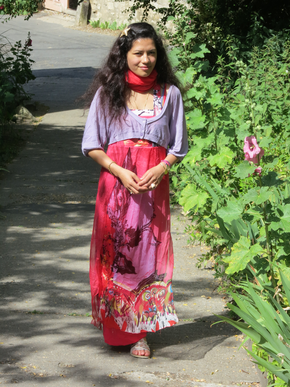
Marie-Anne Cécile Andurand is a multi-talented artist who began by playing the flute, then the cello followed by the violin. However, she soon returned to her favorite instrument, the cello. She holds a Masters degree in Italian art of the Renaissance with a speciality of paintings depicting concerts of angels. An avid traveler, she has spent time on six of the seven continents and Antarctica is certainly next on her list. She is currently pursuing a degree in computer graphics in Montreal. Marie-Anne Cécile contributes the part of the kalimba in the improvisations and is featured on the covers of both volumes 1 & 2. She plays kalimba for The Wandering Trio improvisation ensemble.
Website: www.rainbowmac.com
Website: www.rainbowmac.com
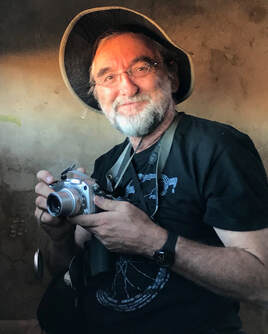
Igor Korneitchouk started composing about 40 years ago, after the high water mark of the 60’s and ‘70’s when he became very excited about new music (which later he identified as "experimental music") and his interest led him to graduate studies at the University of California, San Diego, which he has identified as an important epicenter of this music. Korneitchouk stayed in San Diego, never far away from the university and the music that initially formed his cultural and asthetic persona. In San Diego he started a family, and got a job teaching in a community college – and that inexorably rounded out his hard experimental edge. Korneitchouk began to see connections from new music to the pop and ethnic cultures of his students, as well as connections to his own classical musical upbringing. While still imagining himself as being musically relevant as a composer, he became more significant as a music teacher and mentor, more interested in helping students find their own unique musical voices than pushing his own agenda. Nonetheless he continues writing, even now after having recently retired and pursuing critical environmental work. Korneitchouk identifies his esthetics as "eclectic", not a position but an apt description. This description is: his wide palette is a result of the broad multi-culturally and historically diverse musical universe he inhabits and the atomization of this rich experience by modern media. He works in various sonic worlds and media – minimalist, post-serial, Cage-inspired, electronic/spectral, jazz influenced, timbral-centric music with extended techniques, neo-classic and neo-romantic music. Never championing a single cause; instead, he made a career as a music professor where his diversity also serves his students well.
Websites:
www.igorkorneitchouk.com
www.sheetmusicplus.com
www.youtube.com
Websites:
www.igorkorneitchouk.com
www.sheetmusicplus.com
www.youtube.com
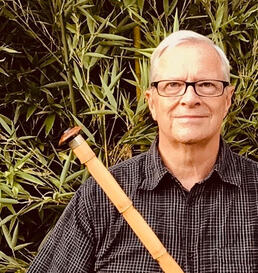
Drake Mabry (aside from being an ebru painter, p hotographer and poet) is a composer, an improviser and multi-instrumentalist. His first instrument was the oboe, but when was the last time he played that? At the University of California, San Diego, where he got his PhD, he swapped out the double reed on his oboe for a miniature sax mouthpiece, then a trumpet mouthpiece, etc. His travels led him to Istanbul where he learned to master another woodwind, the ancient Turkish ney. He divides his time between France, Istanbul, New Zealand and the rest of the world. Drake plays neys made by Ismail Hakki, with whom he also studies Turkish classical music and ney. Hakki's workshop is in Kadikoy, Istanbul (www.neyce.com).
Websites:
www.drakemabry.com
www.soundcloud.com/drakemabry
www.sheetmusicplus.com
www.youtube.com
Websites:
www.drakemabry.com
www.soundcloud.com/drakemabry
www.sheetmusicplus.com
www.youtube.com
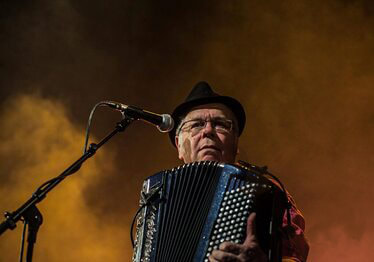
Yves Menut (alias Evym Tunes, alias Jacky Lemarteau): born in September 1952 in Reims. Writer-composer-interpreter, his SACEM catalog includes over 100 compositions. Self-taught guitarist, he began by playing rock music during his adolescent years. Around the age of 20, he began playing the trumpet and created the group “Six Cylinders in V” in Reims during the 1970s which played in the French cultural centers in Africa and in the Indian Ocean. From this he received a Commande d’État from the French government for the circus music “Le Puits aux images”.
www.progarchives.com. Parallel to this, he received a “Licence de Musicologie” degree from the University (Paris VIII) and worked at the mediatheque at the Maison de la Culture in Reims. His family obligations (three children) pulled him away from the music scene. After studies to be a director MJC, he directed the organization d’Ethnics and worked on projects to develop the social centers in Reims, while at the same time completing his third cycle of university studies in public law. He then directed Arts Vivants, a non-profit organization to develop the cultural life in the Vosges region from 1989 to 1998, then directed the same kind of organization in the Limousin region. Which in 2006 became ORACLIM (Observatoire régional des arts et de la culture en Limousin.This inspired him to prepare a Master II in Sociology of culture. When he was fifty, he returned to his trumpet and founded the group Tribal Banda / Tribal Orchestra in Limoges in 2002. His compositions were played by the group and were inspired by all kinds of musical influences, in particular traditional music, festive Balkan music, Afro-Latin and Circassiennes but also Rock and jazz…
www.lemusicbox.bm-limoges.fr
In 2011, he founded the groupe Jacky Lemarteau & Co. Where he developped, with his voice and accordion, a new aspect of his creative energy and his petrodactyl humor. jackylemarteau.fr
In 2016 he fonded the duo, Mélométis, with which he performs for traditional dances.
www.facebook.com/melometis
He is also a member of the Collectif d’improvisation Ortanz and participates in performances of Charivari’s.
www.youtube.com
soundcloud.com/evym-tunes
www.facebook.com/evym.tunes
www.progarchives.com. Parallel to this, he received a “Licence de Musicologie” degree from the University (Paris VIII) and worked at the mediatheque at the Maison de la Culture in Reims. His family obligations (three children) pulled him away from the music scene. After studies to be a director MJC, he directed the organization d’Ethnics and worked on projects to develop the social centers in Reims, while at the same time completing his third cycle of university studies in public law. He then directed Arts Vivants, a non-profit organization to develop the cultural life in the Vosges region from 1989 to 1998, then directed the same kind of organization in the Limousin region. Which in 2006 became ORACLIM (Observatoire régional des arts et de la culture en Limousin.This inspired him to prepare a Master II in Sociology of culture. When he was fifty, he returned to his trumpet and founded the group Tribal Banda / Tribal Orchestra in Limoges in 2002. His compositions were played by the group and were inspired by all kinds of musical influences, in particular traditional music, festive Balkan music, Afro-Latin and Circassiennes but also Rock and jazz…
www.lemusicbox.bm-limoges.fr
In 2011, he founded the groupe Jacky Lemarteau & Co. Where he developped, with his voice and accordion, a new aspect of his creative energy and his petrodactyl humor. jackylemarteau.fr
In 2016 he fonded the duo, Mélométis, with which he performs for traditional dances.
www.facebook.com/melometis
He is also a member of the Collectif d’improvisation Ortanz and participates in performances of Charivari’s.
www.youtube.com
soundcloud.com/evym-tunes
www.facebook.com/evym.tunes
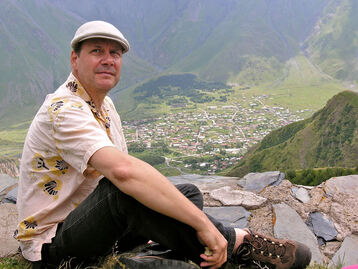
Nicolas Verin: Student of Roger Reynolds and Jean-Charles François at the University of California, San Diego, of Pierre Schaeffer and Guy Reibel at Paris Conservatory, Nicolas Vérin was awarded the prize Villa Médicis hors les murs and the Fulbright Grant. He collaborated with Pierre Henry, Vinko Globokar, Michaël Levinas, IRCAM, Ina_GRM. He received commissions from the French Ministry of Culture, Radio-France, INA-GRM, Henri Pousseur Studio in Liège, and several studios, festivals and conservatoires.
Anchored in electroacoustic music and an approach based on composing with sounds rather than notes, he also writes for instruments. particularly in combination with electronics. His work is based on musical gesture, sound life and morphology. He is also active as improviser and performer of electroacoustic music. Vérin teaches composition at Conservatoire Iannis Xenakis, Paris-Evry. He is a founder of Collectif Impulsion and member of its artistic committee. Several of his pieces are available on CD: 4 pieces for soloist and tape (INA-GRM - on iTunes, Virgin); Chassé-croisés (NVCD 0301 - on cdbaby) ; In Vino Musica (GMEA MP01 - reissued on OKCD on cdbaby).
Websites:
www.nicolasverin.over-blog.com/
www.nicolasverin.com
Anchored in electroacoustic music and an approach based on composing with sounds rather than notes, he also writes for instruments. particularly in combination with electronics. His work is based on musical gesture, sound life and morphology. He is also active as improviser and performer of electroacoustic music. Vérin teaches composition at Conservatoire Iannis Xenakis, Paris-Evry. He is a founder of Collectif Impulsion and member of its artistic committee. Several of his pieces are available on CD: 4 pieces for soloist and tape (INA-GRM - on iTunes, Virgin); Chassé-croisés (NVCD 0301 - on cdbaby) ; In Vino Musica (GMEA MP01 - reissued on OKCD on cdbaby).
Websites:
www.nicolasverin.over-blog.com/
www.nicolasverin.com
A special thank you to the following people who helped make this recording possible:
Igor Korneitchouk and Old King Cole Productions for supporting this project.
Ismail Hakki for his neys and teaching. (www.neyce.com)
Valérie Celebi for inviting me to visit Istanbul in 2010 from which all this evolved.
Marie-Anne Cécile Andurand for her artistry and encouragement.
Igor Korneitchouk and Old King Cole Productions for supporting this project.
Ismail Hakki for his neys and teaching. (www.neyce.com)
Valérie Celebi for inviting me to visit Istanbul in 2010 from which all this evolved.
Marie-Anne Cécile Andurand for her artistry and encouragement.
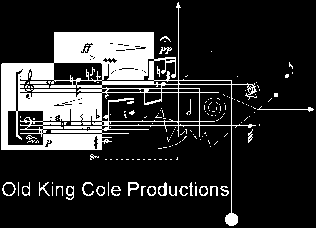
Other Credits
Producer: Old King Cole Productions
Executive Producer: Igor Korneitchouk
Recording: Chas Eller, Charles Eller Studios, San Pancho, Mexico, April 2018
Jack Elliott, Seacoast Recording Studio, San Diego, California, June 2019
Mastering: Igor Korneitchouk and Jack Elliott
Graphic Design & Art: Igor Korneitchouk
Translation: Clytus Faircloth
Producer: Old King Cole Productions
Executive Producer: Igor Korneitchouk
Recording: Chas Eller, Charles Eller Studios, San Pancho, Mexico, April 2018
Jack Elliott, Seacoast Recording Studio, San Diego, California, June 2019
Mastering: Igor Korneitchouk and Jack Elliott
Graphic Design & Art: Igor Korneitchouk
Translation: Clytus Faircloth
